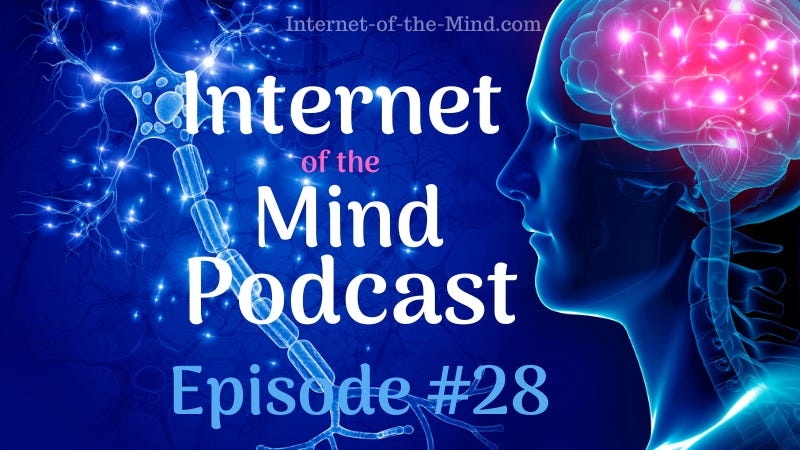🌀 Polyvagal Theory Revisited: What’s New in 2025
Beyond the Buzzword—From Metaphor to Measurable Change
“The story of our nervous system is the story of our capacity to connect, regulate, and recover.” —Don Carter, MSW, LCSW
In recent years, Polyvagal Theory (PVT) has moved beyond academic circles and therapy trainings into wellness spaces, YouTube explainers, and TikTok reels. But in 2025, we’re seeing a shift—not just in popularity, but in how the science itself is evolving and being refined.
In this post, I’ll walk you through what’s new in the world of Polyvagal Theory, where it’s headed, and how these developments impact real people recovering from trauma, chronic stress, addiction, and emotional dysregulation.
🧠 A Quick Refresher on Polyvagal Theory
Originally developed by neuroscientist Dr. Stephen Porges, Polyvagal Theory reframes the autonomic nervous system (ANS) as a hierarchical response system—not just a binary fight-or-flight vs. rest-and-digest model.
It identifies three main states:
Ventral Vagal State (social engagement) – calm, safe, connected
Sympathetic State – mobilized for fight or flight
Dorsal Vagal State – immobilized, shut down, withdrawn
What’s revolutionary is the understanding that we shift through these not based on logic, but based on neuroception—our body’s unconscious scanning for danger or safety. Click here to learn more about neuroception.
🔍 What’s New in 2025?
1. Clarifying the Science: From Metaphor to Measurement
Polyvagal Theory is maturing, and researchers are distinguishing between poetic language and precise biological markers. For example:
Heart Rate Variability (HRV) is still useful but not the gold-standard indicator of “ventral vagal tone” it was once assumed to be.
Respiratory Sinus Arrhythmia (RSA) remains a research tool, but interpretation now includes more nuance.
➡️ Bottom line: The science is catching up with the storytelling.
2. New Tech = New Access
Wearables and mobile apps are helping people track and influence their own vagal state in real time:
Guided breathwork apps that respond to your HRV
Wearables that detect micro-shifts in stress response
Consumer-grade vagus nerve stimulation (VNS) devices on the rise
➡️ Self-regulation is becoming more accessible, personalized, and data-informed.
3. Parts Work Meets Polyvagal Theory’s Autonomic Ladder
Clinicians are integrating Polyvagal concepts with Internal Family Systems (IFS) and other “parts-based” approaches:
Protectors often correlate with mobilized sympathetic responses
Exiles may live in dorsal vagal shutdown
Self-leadership emerges through ventral vagal re-engagement
➡️ Parts Work isn’t just psychological—it’s neurophysiological.
Deb Dana, LCSW has been a pioneer in developing clinical applications for Polyvagal Theory. We already had “Triggers” as a name for what moves us down the Autonomic Ladder. Deb gave us a name for activities that boost us up the ladder and puts us into the ventral vagal state. She calls them “Glimmers”.
In my depiction of Deb Dana’s Autonomic Ladder below, the RED Zone are the mobilized sympathetic responses, the BLUE ZONE is dorsal vagal shutdown, and the GREEN ZONE is we can engage or re-engage with someone through the ventral vagal state:
4. Healthy Skepticism & Ongoing Debate
Some in the field are calling for more rigorous clinical validation of Polyvagal interventions. Others are pointing out limitations of over-attributing symptoms to vagal dysregulation alone.
➡️ This doesn’t invalidate the model—it encourages refinement.
💡 Practical Takeaways
Polyvagal Theory helps us:
Understand our own state shifts (even moment to moment)
Use bottom-up tools (breath, sound, imagery, glimmers) to shift toward safety
Choose interventions that match our nervous system’s readiness for engagement or introspection
Identify our Glimmers: hobbies and activities that bring peace, relaxations or joy.
Try This: 30-Second State Check-In
Pause and ask yourself:
Is my breath shallow or deep?
Do I feel present or disconnected?
Do I want to reach out, withdraw, or act?
Where am I holding tension or discomfort in my body right now?
This simple reflection taps into your neuroception—your body's subconscious sense of safety or threat. By recognizing reactivity and naming your state, you begin to change it.
Go back listen to my podcast on this topic to learn more about next steps when we notice those physical sensations we refer to as neuroception:
Episode 28, Introduction to Parts and Partswork: Healing the Inner Family of Self
What if the anxiety you feel isn’t all of you, but just a part of you trying to protect something tender and unhealed?
🌿 Why It Matters for Healing
Healing—whether from complex PTSD, addiction, codependency, or Adult/Child Syndrome—requires more than insight.
It requires safety.
Ventral vagal activation is the biological foundation for self-connection, co-regulation, and emotional reintegration.
That’s why this theory is so foundational for the therapeutic work we do here at Internet of the Mind—and why we’ll continue exploring it in-depth.
🔮 What’s Next...
Over the coming weeks, we’ll go deeper into:
Vagus nerve toning tools and breath practices
How meditation changes the brain (through a Polyvagal lens)
Why self-regulation is step one in healing from trauma and stress
How your “inner parts” shift between states—and what to do about it
Let me know if the comments below which of these topics you would like to explore next.
Make sure you’re subscribed so you don’t miss a thing 👇
💌 Want the printable version + bonus practices?
Download your free Polyvagal tools & worksheets:
👉 Click Here to Download
Thanks for being part of the Internet of the Mind community.
Let me know in the comments:
🧠 What state are you in right now?
💬 Share your “Glimmers” What helps you shift back to safety when you’re dysregulated?
Stay grounded,
Don Carter, MSW, LCSW
Trauma-Informed Therapist | Partswork Guide | Nervous System Nerd





Awesome Don! I shared this with the outstanding (like you) mental health therapist I do tons of groups with and she was thrilled to receive it. We were just talking about the Vagus Nerve in her stress and anxiety group! I also told her about your fabulous self and tremendous work and shared your website. She is always wanting us to share resources so she can better herself. From your loyal fan and former patient
Alison A. 😀